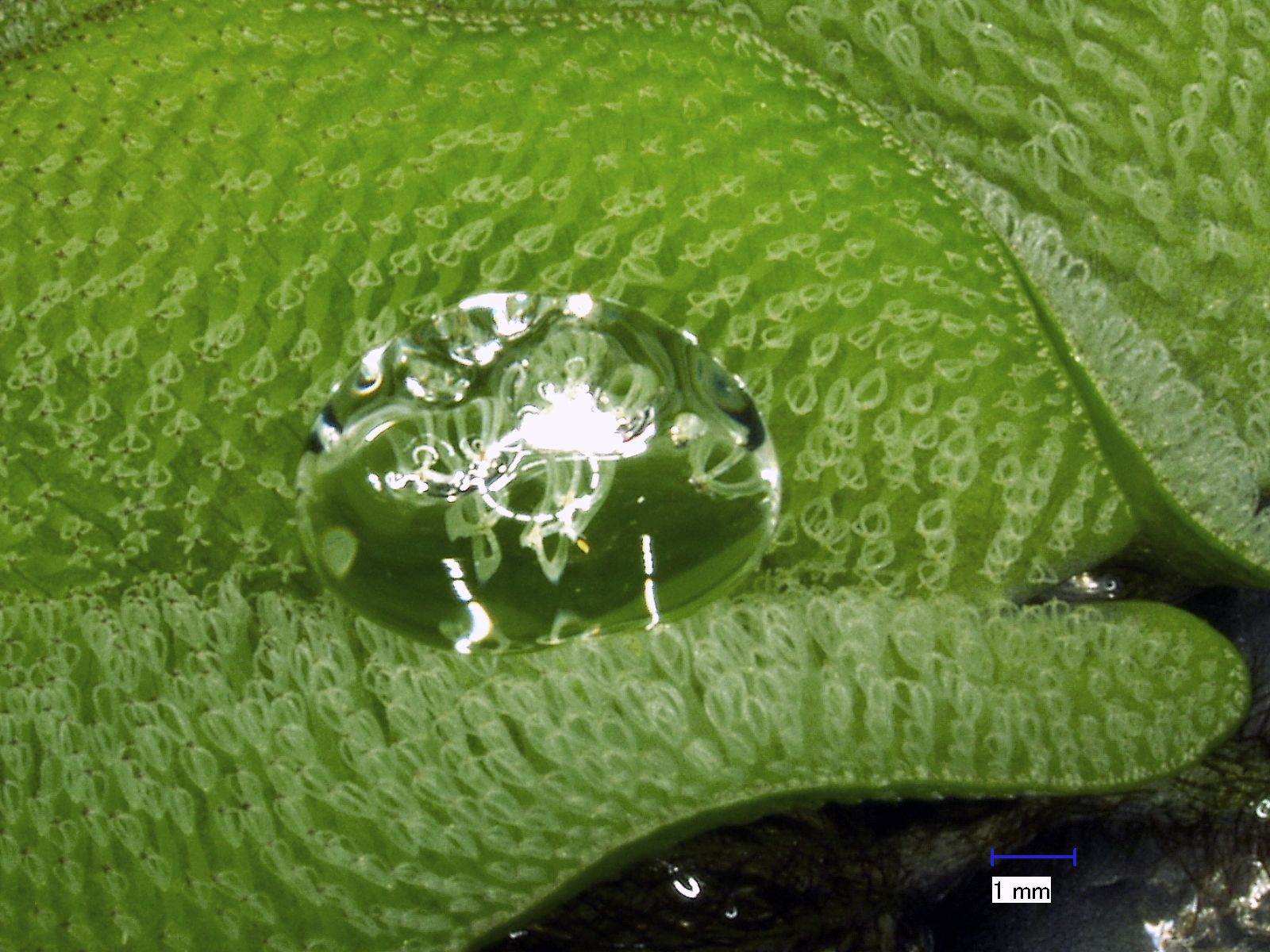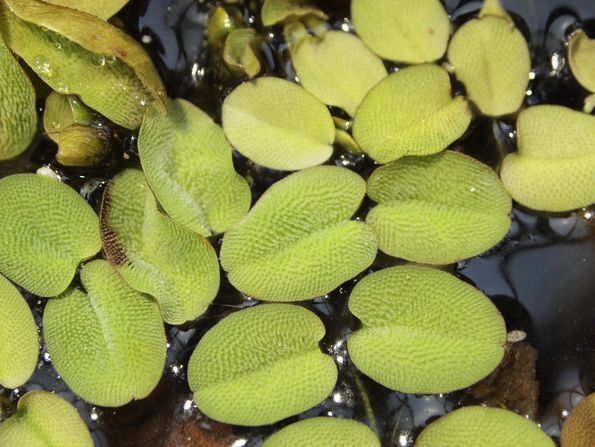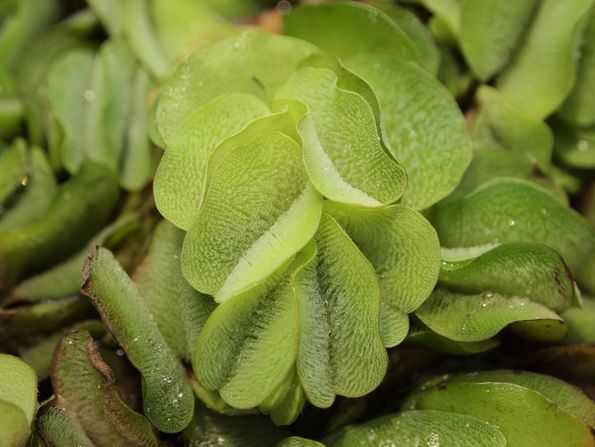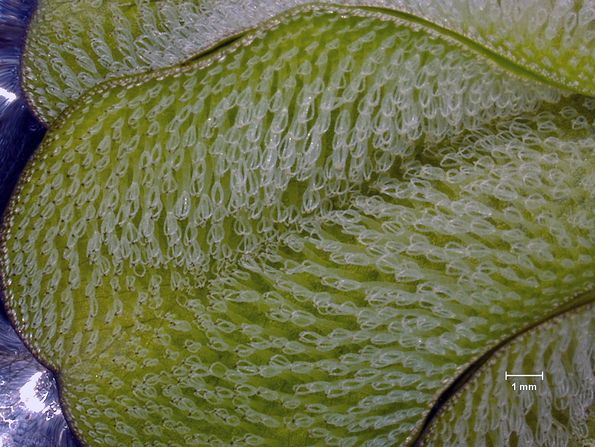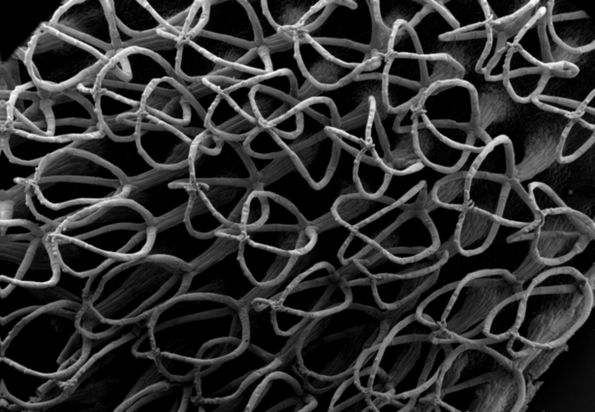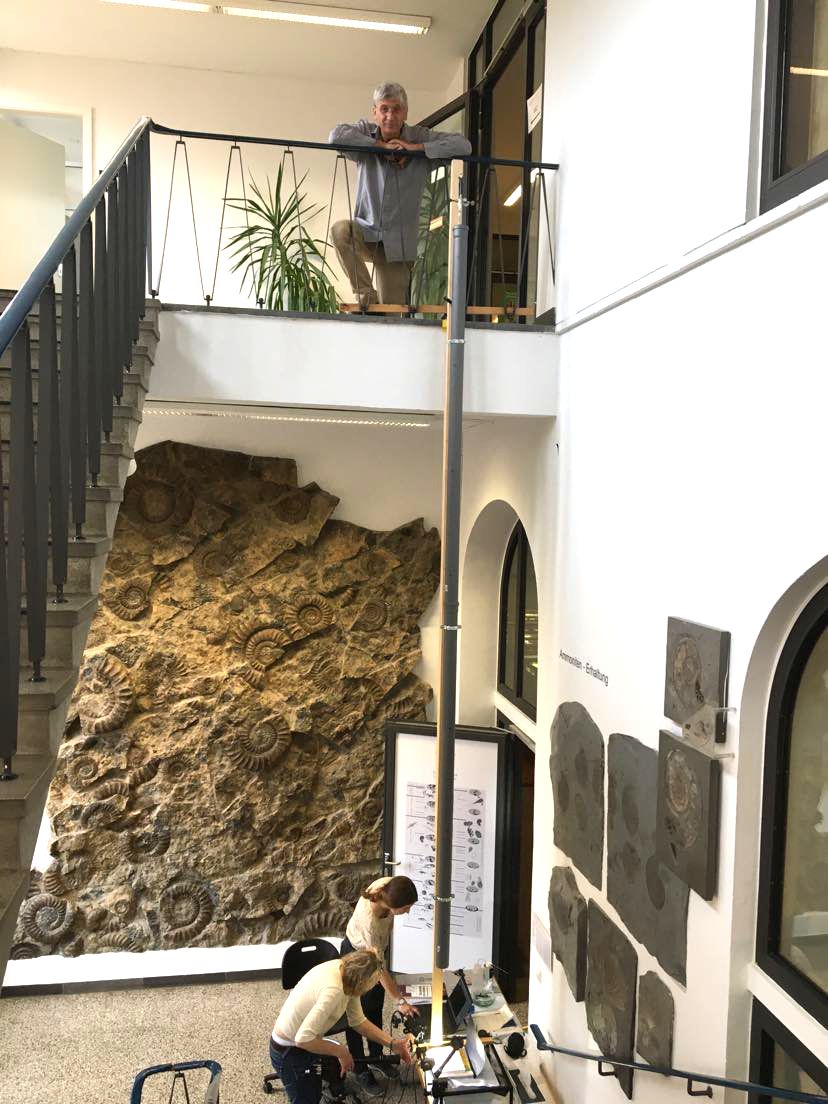The tropical floating fern Salvinia molesta has developed sophisticated structures to allow water to roll off its leaves quickly - even during heavy rainfall. This relieves the pressure on the leaves float-ing on the water surface, but even more importantly, it keeps the stomata open for air exchange. This allows the fern to absorb carbon dioxide which is essential for photosynthesis. This was discov-ered in an interdisciplinary collaborative project between the working group of Professor James Ne-belsick and Dr. Dr. Wilfried Konrad from the Department of Geosciences at the University of Tü-bingen and Dr. Anita Roth-Nebelsick from the State Museum of Natural History in Stuttgart. In their experiments, the team simulated rainfall and used high-speed cameras to track the path of water droplets slapping onto the fern's leaves. The leaf structures are efficiently adapted to rainfall and may contribute to the strong growth and rapid spread of the fern. Outside its native Brazil, Salvinia molesta is considered a dangerous invasive plant, displacing other species. The new study is pub-lished in the Journal of the Royal Society Interface.
Salvinia molesta, like all floating ferns, floats freely on the water surface. Of each trifoliate whorl, two floating leaves lie on top, with the plant extending one root-like leaf downward. This fern quickly forms thick, dense mats on the water surface. It originates from humid tropical regions in Brazil, where it is regularly exposed to heavy rainfall. The upper surface of the floating leaves is covered with highly water-repellent hairs, whose structure resembles tiny egg-whisks. "These trichomes en-sure that the submerged leaves do not become waterlogged," reports Wilfried Konrad. "Other aquatic plants, however, achieve this with much less elaborate structures. We therefore asked ourselves what benefit the fern obtains from the little whisks."
Experiments simulate rainfall
The research team obtained specimens of Salvinia molesta from the Tübingen Botanical Gardens and the Wilhelma in Stuttgart. In one experiment, leaves of the plant were fixed in place while drops of water of varying size splashed onto them from different heights. "Overall, the leaves quickly shook off most of the artificial rain from the surface. The camera images show that the trichomes respond elastically to the kinetic energy of the falling drops," Konrad says. Even more important in shaking off the water, however, is the elasticity of the leaves as a whole. The rain experiment was also carried out on free-floating leaves, underlining the key role of elasticity. "When the leaves were fixed, it took much longer for their surface to become water-free again," Konrad explains.
The researchers observed how water droplets bounced off the leaves, with some taking on a pan-cake-like shape or being broken up into smaller droplets. "Especially in the experiments with large water droplets falling from a great height onto the leaves, we noticed that there was always some residual water left under the tiny whisks," says Konrad. "Surprisingly, the trichomes seemed to rather prevent the water from beading off quickly."
Water-repellent structures
Detailed observations, however, revealed that they were very efficient at keeping the leaf base free of water. "The energy state of a droplet is more favorable on the trichomes than between them. This is due to the water-repelling effect of the whisks," Konrad explains. When a drop of water rolls over the trichomes of the leaf, it literally sucks up the residual water trapped between the trichomes due to its strong surface forces. "This keeps water off the stomata at the base of the floating fern's leaves, which are also covered with water-repellent nanocrystals made of wax. This is where the gas exchange that is vital for the plant takes place." Konrad added that this may be a decisive factor in the high productivity of the Salvinia molesta, which can double its leaf mass within a few days under favorable conditions.
Publication:
Wilfried Konrad, Anita Roth-Nebelsick, Benjamin Kessel, Tatiana Miranda, Martin Ebner, Rena Schott and James H. Nebelsick: The impact of raindrops on Salvinia molesta leaves: effects of tri-chomes and elasticity. Journal of the Royal Society Interface, https://doi.org/10.1098/rsif.2021.0676
Videos:
Experiments with falling drops on the floating leaves of the tropical fern Salvinia molesta:
- Drop falling height: 30 cm. http://www.pressefotos.uni-tuebingen.de/S4.mp4
- Drop falling height: 50 cm, leave fixed in place. http://www.pressefotos.uni-tuebingen.de/S7.mp4
- Drop falling height: 430 cm: http://www.pressefotos.uni-tuebingen.de/S9.mp4
More videos: https://royalsocietypublishing.org/doi/suppl/10.1098/rsif.2021.0676

